Journaling is an essential part of my creative process and lifestyle. I can jot down a character outline, keep track of books I want to read, or make note of healthy meal ideas. But my ability to carry only ONE notebook hinges on being able to manage my schedule, as well.
|10 Monthly Layouts to Simplify Your Life|
Monthly pages are an easy way to gather future planning events and tasks on a central spread for the whole month. From there, I migrate events and tasks to my weekly and daily pages. How you organize your monthly spread depends on your needs.
Now, close your eyes. Don’t worry, I’m not going to do anything weird! Just close your eyes and ask yourself these questions:
- How much of my time is dominated by meetings and appointments?
- Am I visually motivated or do I do well with sequential lists?
- How important is goal-setting to me?
- Which major tasks do I intend to track monthly?
Keep the answers in mind as we work through some of these layout options.
My Current Layout
The Modified Berry:

The original inspiration for my current monthly layout (pictured above) came from the lovely and talented Kara at bohoberry.com. I loved how she broke up the spread into columns, which makes scheduling multiple events on a given day much easier.
I also added a column dedicated to my blog planning. It gives me a quick snapshot of ideas and posts I’m planning; from here, I can move things around and change post ideas as needed.
Having my monthly goals on the page also gives me a metric to evaluate at the end of the month for how effectively I used my time.
Alternative Layouts
If you’ve visited my blog before, you know how much I love my Leuchtturm1917 notebook. I have an old dot grid journal from the clearance pile at Target ($2.98), and decided to keep it handy for trying out new layouts. It allows me to experiment a bit without burning through half the pages in my bullet journal. The quality isn’t great (the stiff binding drives me bonkers), but for less than $3, I really can’t complain.
See my list of high-quality notebooks that hold up to bullet journaling.
What works for me might not work for you, so I gathered up some of my favorite monthly layouts and developed a few of my own. If you’re new to bullet journaling, I encourage you to examine each layout critically in terms of your needs.
Here we go…
The Ryder:

Ryder’s Bullet Journal system is clean, simple, and minimalist. A monthly layout can be as simple as a header (the name of the month) and a numbered column, one for each day of the month. The “Ryder” is one of the quickest methods to set up your monthly log, and I would encourage you to give it a try before moving on to more elaborate formats.
Advantages:
- Requires very little time to set up
- No unnecessary distractions
- Creates a single dedicated page to hold the month’s appointments
- Streamlined format makes for at-a-glance scheduling
Disadvantages:
- Does not distinguish time of day
- May not suit visually-oriented people who need grid calendar format
- Goals are not incorporated into task list
- No additional space for notes
The Basic Betty:
The “Basic Betty” is essentially the “Ryder” but with a few additional features. For starters, days of the week are added to the far left column to make scheduling a bit easier. The additional sections on the right page showcase the month’s actionable goals, and separate notes for people who need a little free thinking space.
Advantages:
- Easy to set up
- Goals drive major tasks for the month
- Space for notes, inspiration, ideas
- Streamlined format makes for at-a-glance scheduling
Disadvantages:
- Does not distinguish time of day
- May not suit visually-oriented people who need grid calendar format
The Double Life:
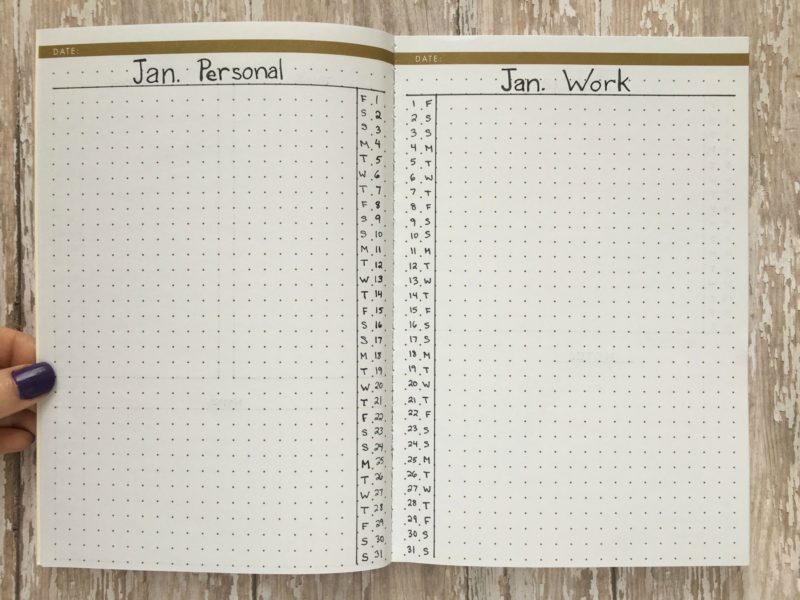
Rather than creating entirely separate journals for your personal and professional needs, the “Double Life” allows you to synch appointments from both worlds. This system deals strictly in appointments, meaning goals and task lists have to find a home elsewhere.
Advantages:
- Easy to set up
- Synchs professional and personal appointments for the whole month
- Simple, at-a-glance scheduling
- No unnecessary distractions
Disadvantages:
- Does not allow space for goals or monthly tasks
- May not suit visually-oriented people who need grid calendar format
- Does not break scheduling into time of day
- Can be overwhelming to have so much information on one spread
Check out how and why I use the bullet journal system.
The Weekly Warrior:
A month can be a lot to process all at once. If you like biting off a week at a time, the “Weekly Warrior” is for you. The right page organizes appointments and events, while the left page is left to prioritize major tasks on a weekly basis.
Advantages:
- Easy to set up
- Quickly migrate major tasks from week to week
- Simple, at-a-glance scheduling
Disadvantages:
- Does not allow space for goals or monthly tasks
- May not suit visually-oriented people who need grid calendar format
- Does not break scheduling into time of day
The Crop Top:
Some people like a highly-structured layout where everything has its place. Others like a lot of free space for tasks and notes. The “Crop Top” suits both types of people. The top half of this spread neatly organizes scheduled events. The bottom half can be customized to the user or left blank (for all you plan-by-the-seat-of-your-panters).
Advantages:
- Allows space for goals, notes, tasks, etc.
- Simple, at-a-glance scheduling
- Appointments visible even while writing on bottom half
Disadvantages:
- May not suit visually-oriented people who need grid calendar format
- Does not break scheduling into time of day
- The two column format may create an awkward break in the middle of a week
The Task Master:
The “Task Master” is for people of action. This layout emphasizes actionable goals and productivity like a task assembly line. Unaccomplished items from the previous month are listed in the far left column, followed by current goals and tasks based on those goals. The far right column gives a preview of upcoming projects. The monthly scheduling section is significantly smaller than other formats, so this layout should not be used by people with heavy appointment loads.
Advantages:
- More space to focus on tasks and actionable goals
- Simple, at-a-glance scheduling
- Appointments visible even while writing on bottom half
Disadvantages:
- May not suit visually-oriented people who need grid calendar format
- Very limited space for appointments
The Calendar:
Now, we’re getting into the traditional calendar layouts. If you’re new to bullet journaling or have a hard time adapting to list-based scheduling, try drawing out a standard monthly calendar in your bullet journal. This is a nice format to use if you want your spouse or children to be able to read your schedule easily.
Advantages:
- Ideal for visually-oriented people or those who need grid calendar format
- Familiar, even for non-bullet journalists
- Easy at-a-glance scheduling
- Allows some space for goals or tasks
Disadvantages:
- Takes longer to set up
- Spans the seam of the notebook
- More difficult to customize or separate into work/personal categories
The Mini Calendar:
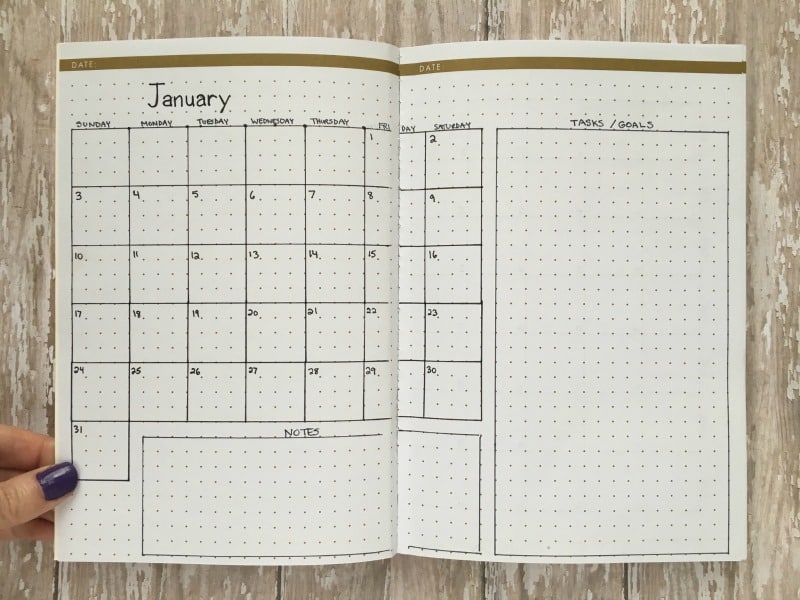
If you like a traditional calendar, but you need more room for goals, notes, tasks, etc., the “Mini Calendar” might be a good fit for you.
Advantages:
- Ideal for visually-oriented people or those who need grid calendar format
- Familiar, even for non-bullet journalists
- More space for notes, tasks, goals, etc.
Disadvantages:
- Takes longer to set up
- Spans the seam of the notebook
- Limited space for appointments
The Vertical Twist:
The “Vertical Twist” solves that pesky problem of scheduling on the seam by turning the whole notebook on its side. The top page now has the ideal shape for a traditional calendar view, and the entire lower page can be used for note, task planning, goals, habit tracking, etc.
Advantages:
- Ideal for visually-oriented people or those who need grid calendar format
- No more calendar on the seam of the notebook!
- More space for notes, tasks, goals, etc.
Disadvantages:
- More difficult to set up that list schedules
- Requires user to turn whole notebook to view properly
Now, Make It Your Own!
I can almost guarantee that your perfect monthly layout is not in this post. These are basic templates to get you pointed in the right direction, but each person’s needs are unique.
Start somewhere. Adjust as needed!
Which basic format do you use? Comment below & tell me about your planning system, or post a photo on my Facebook page!
Brainstorm with me!
Subscribe to my newsletter for Page Flutter updates, posts, and announcements,
and FREE access to resources in the Vault!
Don’t worry, I only deliver the good stuff. No spam.
Facebook // Twitter// Instagram // Pinterest




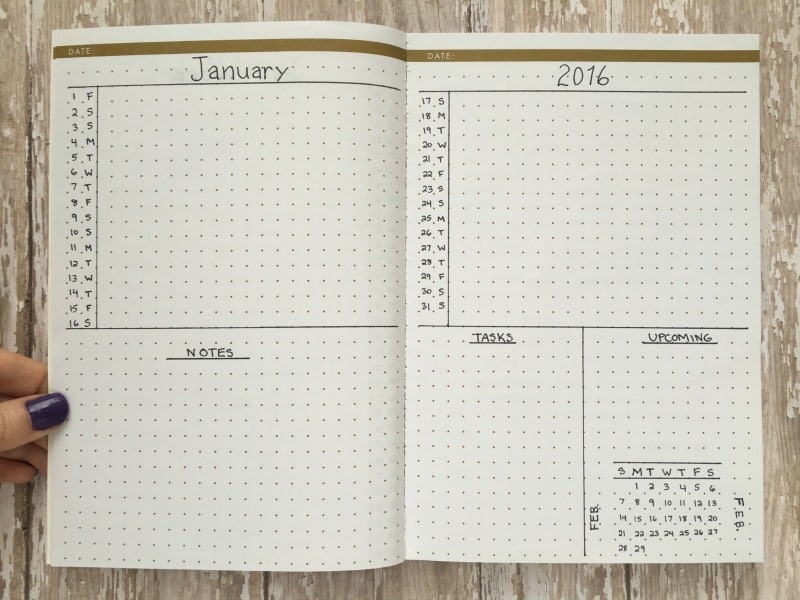
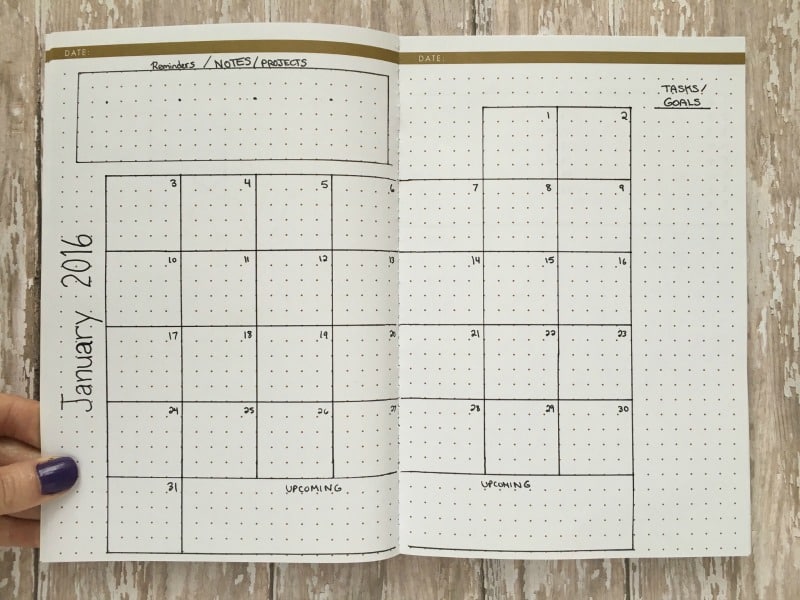
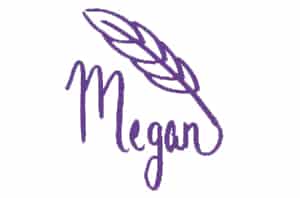






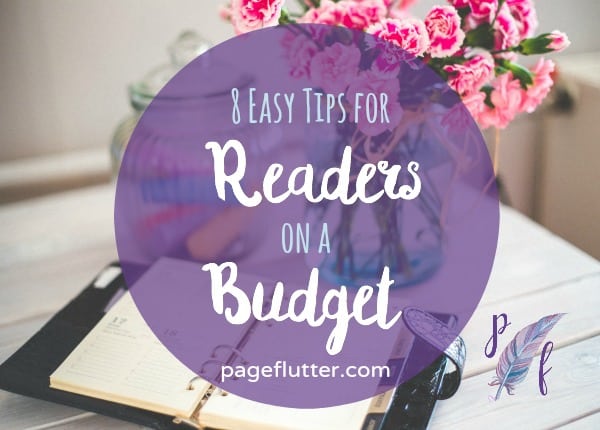
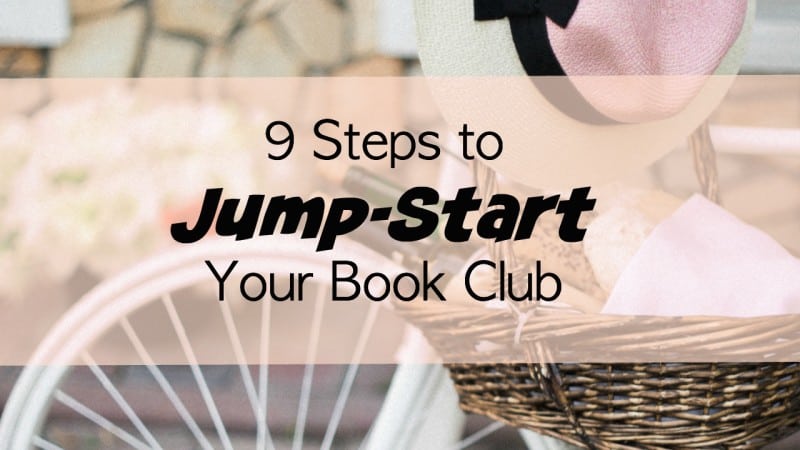
I’m really not very good at coming up with ideas to try out so this has given me some really good tips. Thank you! 🙂
No problem, Lucy! I’m so glad is was useful. Sometimes I don’t know until a post goes up how much it will benefit people, so that it wonderful to hear. 🙂
I am a newbie in bullet journaling and am excited to start! What size notebook are all these layouts drawn in?
Hi, Melissa! My Leuchtturm1917(http://amzn.to/1VEw7o1) is an A5 size, which measures roughly 5.5 inches x 8 inches.
I design my layouts for an A5 notebook unless otherwise noted. Hope that helps & I can’t wait to hear how you like bullet journaling. 🙂
Love these suggestions. I’m so happy that I found your blog.
Thank you, Tasha! I’m happy to have you here. 🙂
I’ve just found your blog, and read a few entries. I like the options and suggestions along with your candor. Thank you very much for sharing!
Thank you, Tania! I try to be as honest with people as I can. I’m really glad you found something helpful. 🙂
I love your blog. I came over from IG but I can’t remember what hashtag led me to your profile. Your posts about BuJo make me want to try it again and the layouts above are great ideas. I’m also looking forward to trying the 6 Word Story Challenge.
Hi, Jennifer! I’m so glad you found my blog. I love bullet journaling, but I know it can take some time to find the right balance. I hope you pick it up again, and I look forward to reading your six-word stories!
Well done! Lots of useful ideas. I may try several over the next few months and see what I like best. Thanks!!
I’m glad to hear it, Claudia! I’d love to know which ones stick around in your journal. 🙂
I’m new to bullet journaling so still trying to figure out what works for me. Thank you for these layout ideas!
TenThousandHourMama.com
You’re so welcome! I’d love to hear your thoughts on the system once you’ve settled into your rhythm. 🙂
Pingback: Bullet Journaling for Teens » Slap Dash Mom
Pingback: 10+ Bullet Journal Tutorials | Dawn Nicole Designs™
Pingback: Bullet Journal : mon planning de septembre + 10 modèles pour s'inspirer ⋆ ZunZún - Féminin. Eclectique. Ecosensible.
Pingback: Organize Your Life Linky Party - Hey Katie
Pingback: Slap Dash MomOrganize Your Life Linky Party | Slap Dash Mom
Pingback: Organize Your Life Week 8 - Nerdy Foodie Mom
Pingback: Setting Up A New Bullet Journal – Striving Momma
Were do you begin iv watched videos on ytube and downloads of hundreds of ideas Im sad to admit but iv been doing this for around 4 months or more so many. Ideas iv told my self tomorrow is the day I’m staring my bulliet journal any good ideas for health and wellbeing as iv just been diagnosed with bipolar x
Shelley, first of all, welcome to bullet journaling!
I recommend starting very simply. Limit your journal to your index, future planning spread, a simple monthly spread, and dailies. Do that for about a week to get a feel for the foundation of bullet journaling. Then–and only then–add a collection that suits your life (a list of books you want to read, a habit tracker, a budgeting page). Keep it very basic at first so you don’t overwhelm yourself. Over time you will be able to add more/change things needed. Hope that help!
Here’s link to my beginning bullet journaling post: https://pageflutter.com/the-bullet-journal-what-it-is-why-you-need-it/
This is a great and comprehensive post. So many bullet journal posts are fluffy with limit substance. I really loved what you did here. Thank you so much for posting this!
You’re very welcome, Angela! I try to post the information I needed when I first started. 🙂
this is brilliant great food for thought thank you great job
Pingback: Setting Up A New Bullet Journal » Striving Momma
Pingback: this and that blog Life Rambles: 2017 Bullet Journal Plans
omg. the names of these layouts are slaying me! lol!
Thanks, you’ve fuelled some ideas for me!
Glad you liked them! I had so much fun putting them together. Would love for you to share your ideas with me on Instagram. 🙂
I will! I’ll find you…